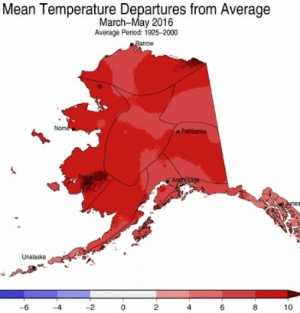Since WWII it has been possible to make a career as an ethnobotanist: before that you needed to be independently wealthy, as well as intrepid. Aimé Bonpland [b.1773 prev] spent a lot of time recording and classifying plants in the tropics and drinking maté. One of the earliest ordinary blokes to be paid as an ethnobotanist was Harvard's Richard Evans Schultes [195-2001] - his father was a plumber, RES was a scholarship boy - who defined what he did as "investigating plants used by primitive societies in various parts of the world". One of his students was Wade Davis, who went up the amazon blowing his mind on bizarre mixtures of vegetation found in the forest. Of course, it wasn't up to Davis to decide what to toke up on, he just took advice from the local shamans. They and their ancestors had 8000 years of experimentation [some of it probably fatal] to draw upon. That's important: no amount of describing the leaves and counting the stamens is going to reveal a new prophylaxis against malaria. A hint in an ethnobotanist's lab book will, otoh, goad the chemists into trying to characterise the active principals in a particular vine's seeds. It weeds out the dead ends and focuses on the more likely sources. Schultes' best-selling book The Plants of the Gods: Their Sacred, Healing, and Hallucinogenic Powers (1979), was tellingly co-authored with chemist Albert "LSD" Hofmann.
Paul Alan Cox is also an ethnobotanist, he's also a Mormon (if that matters), who did a MSc on a Fulbright scholarship in U. Wales at Bangor, before getting another fellowship towards his PhD in Harvard. There he won the highly prestigious Bowdoin Prize (twice!) and came within the orbit of Schultes. In contrast to Wade Davis up the Amazon, Cox drew a gig in Samoa talking to native healers in that tropical paradise.
These old chaps used an infusion from the mamala tree Homalanthus nutans to treat viral hepatitis. This tree is a member of the Euphorbiaciae, a family which includes rubber Hevea brasiliensis, the Christmas plant poinsettia Euphorbia pulcherrima and common-or-garden wood spurge Euphorbia amygdaloides, along with another 7,500 named species! These plants are notorious for the richness and diversity of their plant secondary compounds, which often function to deter herbivores. The castor oil plant Ricinus communis, for example, contains ricin, a protein which prevents ribosomes from making proteins from RNA. A tiny pellet of this stuff was used to assassinate Bulgarian dissident Georgi Markov in London in 1978. Cox and his collaborators thought that, if mamala leaves could control one virus, it might work for others and the chemists in the crew started to run the extracts through their instruments. The result was prostratin, a modulator of protein kinase C, which is effective against HIV, pancreatic cancer and other deadly diseases. It was an early case-study of how that traditional knowledge might be leveraged to cure people in today's world. Notably, too, a chunk of the IP royalties for the drug were funnelled back to Samoa for gratitude and fairness.
Dr Cox went back the USA for more research and teaching jobs but he didn't forget his pals back in Samoa. When they were being bullied into selling logging rights to Megacorp for more fancy furniture, Cox leveraged the income disparity to fulfill some of the immediate economic needs of the indigenous people. He founded and shilled for Seacology, a non-profit foundation, which in the first instance built a school in the village where Cox had spent his field work years. That was in 1988. Since 1991 Seacology has signed agreements to preserve 3000 sq.km of tropical reefs and 2500 sq.km of tropical forest in return for installing 'good things' in the locality.
These old chaps used an infusion from the mamala tree Homalanthus nutans to treat viral hepatitis. This tree is a member of the Euphorbiaciae, a family which includes rubber Hevea brasiliensis, the Christmas plant poinsettia Euphorbia pulcherrima and common-or-garden wood spurge Euphorbia amygdaloides, along with another 7,500 named species! These plants are notorious for the richness and diversity of their plant secondary compounds, which often function to deter herbivores. The castor oil plant Ricinus communis, for example, contains ricin, a protein which prevents ribosomes from making proteins from RNA. A tiny pellet of this stuff was used to assassinate Bulgarian dissident Georgi Markov in London in 1978. Cox and his collaborators thought that, if mamala leaves could control one virus, it might work for others and the chemists in the crew started to run the extracts through their instruments. The result was prostratin, a modulator of protein kinase C, which is effective against HIV, pancreatic cancer and other deadly diseases. It was an early case-study of how that traditional knowledge might be leveraged to cure people in today's world. Notably, too, a chunk of the IP royalties for the drug were funnelled back to Samoa for gratitude and fairness.
Dr Cox went back the USA for more research and teaching jobs but he didn't forget his pals back in Samoa. When they were being bullied into selling logging rights to Megacorp for more fancy furniture, Cox leveraged the income disparity to fulfill some of the immediate economic needs of the indigenous people. He founded and shilled for Seacology, a non-profit foundation, which in the first instance built a school in the village where Cox had spent his field work years. That was in 1988. Since 1991 Seacology has signed agreements to preserve 3000 sq.km of tropical reefs and 2500 sq.km of tropical forest in return for installing 'good things' in the locality.
- kindergarten vs sea-turtle eggs
- scholarships vs the habitat of a subspecies of black crested gibbon Nomascus nasutus
- solar powered community centre vs planting mangroves
- ecotourist centre with toilets vs dry spiny forest
- re-roofing the health centre vs conservation area













